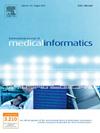Multimodal convolutional neural networks for the prediction of acute kidney injury in the intensive care
IF 3.7
2区 医学
Q2 COMPUTER SCIENCE, INFORMATION SYSTEMS
International Journal of Medical Informatics
Pub Date : 2025-02-04
DOI:10.1016/j.ijmedinf.2025.105815
引用次数: 0
Abstract
Increased monitoring of health-related data for ICU patients holds great potential for the early prediction of medical outcomes. Research on whether the use of clinical notes and concepts from knowledge bases can improve the performance of prediction models is limited. We investigated the effects of combining clinical variables, clinical notes, and clinical concepts. We focus on the early prediction of Acute Kidney Injury (AKI) in the intensive care unit (ICU). AKI is a sudden reduction in kidney function measured by increased serum creatinine (SCr) or decreased urine output. AKI may occur in up to 30% of ICU stays. We developed three models based on convolutional neural networks using data from the Medical Information Mart for Intensive Care (MIMIC) database. The models used clinical variables, free-text notes, and concepts from the Elsevier H-Graph. Our models achieved good predictive performance (AUROC 0.73-0.90). These models were assessed both when using Scr and urine output as predictors and when omitting them. When Scr and urine output were used as predictors, models that included clinical notes and concepts together with clinical variables performed on par with models that only used clinical variables. When excluding SCr and urine output, predictive performance improved by combining multiple modalities. The models that used only clinical variables were externally validated on the eICU dataset and transported fairly to the new population (AUROC 0.68-0.77). Our in-depth comparison of modalities and text representations may further guide researchers and practitioners in applying multimodal models for predicting AKI and inspire them to investigate multimodality and contextualized embeddings for other tasks. Our models can support clinicians to promptly recognize and treat deteriorating AKI patients and may improve patient outcomes in the ICU.

求助全文
约1分钟内获得全文
求助全文
来源期刊

International Journal of Medical Informatics
医学-计算机:信息系统
CiteScore
8.90
自引率
4.10%
发文量
217
审稿时长
42 days
期刊介绍:
International Journal of Medical Informatics provides an international medium for dissemination of original results and interpretative reviews concerning the field of medical informatics. The Journal emphasizes the evaluation of systems in healthcare settings.
The scope of journal covers:
Information systems, including national or international registration systems, hospital information systems, departmental and/or physician''s office systems, document handling systems, electronic medical record systems, standardization, systems integration etc.;
Computer-aided medical decision support systems using heuristic, algorithmic and/or statistical methods as exemplified in decision theory, protocol development, artificial intelligence, etc.
Educational computer based programs pertaining to medical informatics or medicine in general;
Organizational, economic, social, clinical impact, ethical and cost-benefit aspects of IT applications in health care.
 求助内容:
求助内容: 应助结果提醒方式:
应助结果提醒方式:


